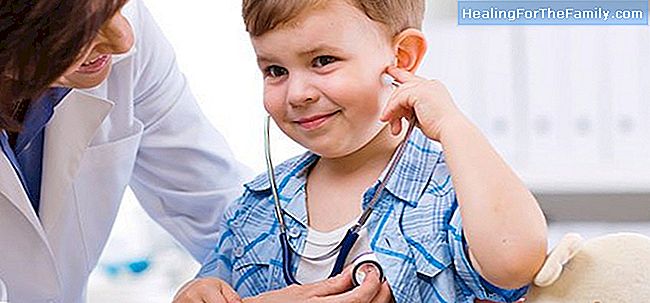10 Rare diseases that affect children
What are rare diseases? These are those that have a low incidence in the population, that is, that affect a very limited number of people. A disease is considered rare when it only affects less than 5 people in 10 000 inhabitants. Although few people suffer from a rare disease in particular, many ar
What are rare diseases? These are those that have a low incidence in the population, that is, that affect a very limited number of people. A disease is considered rare when it only affects less than 5 people in 10 000 inhabitants.
Although few people suffer from a rare disease in particular, many are considered as such, in fact, according to the World Health Organization, there are about 7000 global diseases that affect 7% of children and adults from around the world. Rare diseases suffered by children
The anguish of parents of children with rare diseases is great, since there are few treatments or investigations for them and sometimes they tend to be isolated. However, 'they should try to connect with others', says Paloma Tejada, communications director of the European Organization for Rare Diseases (EURORDIS), an alliance of patient organizations and people active in the field of diseases, non-governmental and directed by the patients.

Do you know of a rare disease? This is just a small list with 10 of them that usually affect the child from before birth, so they have a genetic component:
1.
Moebius syndrome : two cranial nerves are not fully developed. These nerves are responsible for blinking, lateral movement of the eyes and facial expressions so it causes paralysis on the face. This causes drooling, speech difficulties and pronunciation problems.2.
Gilles de la Tourette syndrome es: it is known as the disease of tics and the children who suffer from it perform rapid and involuntary movements of the muscles and involuntary production of noise and words. 3.Aase Syndrome
: it is hereditary and is characterized by an anemia caused by an alteration in the bone marrow and associated with joint and skeletal malformations. 4.Hemophilia
: it is a difficulty for the blood to clot. The children who have it have inherited it from their parents and there is no cure for it, although the constant care and attention makes it possible for them to lead a normal life. 5.Cystic fibrosis
: it is a chronic and hereditary disease that affects the glands that produce external secretions and causes a thickening of the mucus and obstruction of the tubes that transport it. The lungs, the digestive system, the liver, the pancreas and the reproductive system are the organs most injured by this increase in viscosity. 6.Albinism
: due to defects in the synthesis and distribution of melanin. It is characterized by depigmentation of skin, iris and retina. They are children who have no pigment in their hair or in their eyes. 7.Prader Willi Syndrome
: is present from birth and affects many parts of the body. Children who suffer from it are obese and have poor muscle tone. It also affects the mental capacity and the sex glands that do not produce hormones.8.Rett syndrome:
mainly affects girls and manifests during the second year of life. It shows a delay in the acquisition of language and motor coordination. 9. Hutchinson-Gilford Progeria Syndrome
: is a rare genetic disease characterized by accelerated aging of children. Children are born healthy but after a few months, the disease shows its side, giving the child the appearance of an old man.10.Hydrocephalus
: cerebrospinal fluid builds up in the skull and puts pressure on the tissues of the brain. This makes the head larger than usual. Source: Orphanet, ERDF and WHO












